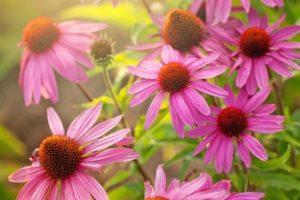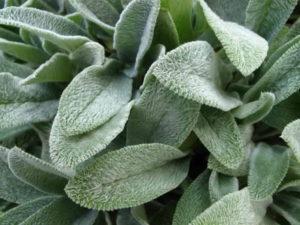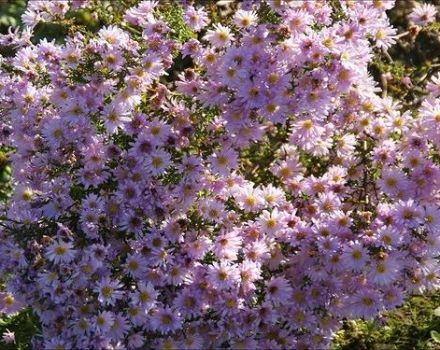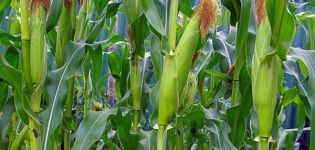Planting and caring for perennial coreopsis, TOP 25 varieties
If you see coreopsis once, you will fall in love with it forever. Flower growers are attracted by decorativeness, unpretentiousness in care. One has only to sow seeds in the garden, and the next year you will get a carpet of yellow, brown, reddish shades. A flower from the Astro family can grow in any corner of the garden, on all soils. For abundant flowering, it is enough to provide regular watering. In general, planting and caring for perennial coreopsis will not be a burden.
Description
The coreopsis family is represented by perennial and annual plants. But this fact does not force one to abandon one in favor of the other. Both flowers are graceful and spectacular, and bright flowers, framed by the most delicate greenery, emit the sun's rays.
Herbaceous plant, up to 1 meter or slightly more, with widely spreading thin shoots, with an abundance of palmate or lanceolate leaves, which are located at the base of each shoot. At the end of the shoot, leaves are practically absent, giving the flowers a floating look.
Coreopsis is loved for its long flowering, which lasts from mid-July until the first frost. The flower has a compact bush form, during flowering it is completely covered with inflorescences of various colors: terracotta, bright yellow, pink, red and mixed colors. The flowers are single-row or double, with densely filled petals along the edge.
The flowers are not large, only 3 to 6 centimeters in diameter, but against the background of needle-like foliage and in the collection they seem huge, each has a dark core. After flowering, a box with seeds appears. For the shape of this box, the plant was named "bug species".
The seeds are small, for comparison: 1 gram contains about 500 seeds.
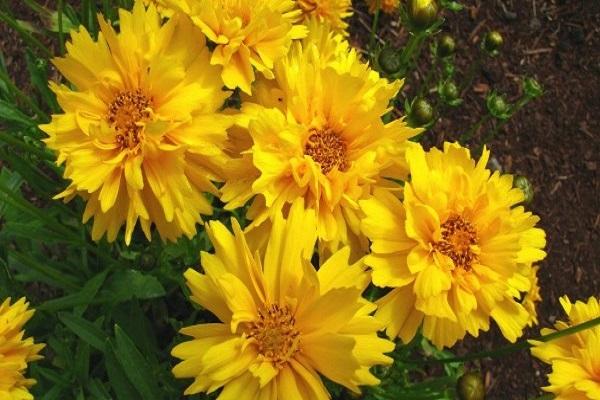
Features:
Outwardly, coreopsis is similar to chamomile. It is easy to grow a flower on your site. If you plan to grow an annual crop, then it is enough to sow the seeds in mid-May in open ground or in a greenhouse in April. Flowering will be lush and long lasting.
A perennial crop usually blooms in the second year, when sown in a flower bed. But if sowing is carried out through seedlings, flowering is observed in the first year of life.
Types and varieties
All types of coreopsis are conventionally divided into perennial and annual. There are more than 50 of them in their variety.Below we present a list of species, varieties of coreopsis, in order to facilitate the choice for planting in the garden.
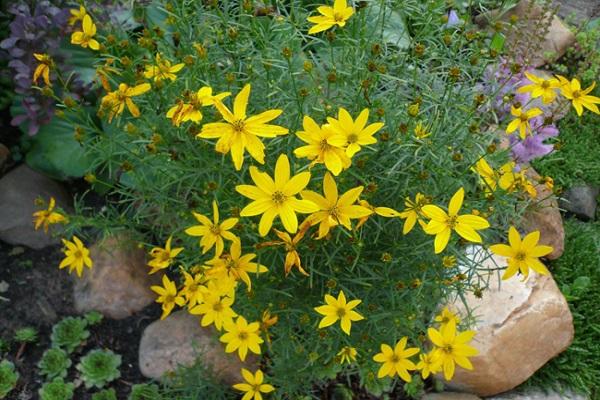
Drummond
An annual flowering dwarf shrub, reaching a height of 40-60 centimeters. Flowering begins in July and continues until late autumn. The flowers are bright yellow, with a dark red center, up to 3-6 centimeters in diameter. It has a highly branched stem and pinnate leaves. Drummond varieties.
Golden Crown
Large yellow flower. Its petals are laid out in 2-3 rows, which makes the inflorescence seem terry. The edges of the petals are serrated. The core is dark yellow. The diameter of the flowers is up to 6-8 centimeters.
Earley Sunrise
The short bush of Earley Sunrise will perfectly become a border for flower beds with tall flowers, since the height is 45 centimeters. The flowers are sunny, yellow, semi-double, with a jagged edge, petals. Flowering is long and abundant.

Mystigri
The flowers of the coreopsis Mystigri are similar to the common chamomile, but larger in diameter. The petals are pale yellow with a bright center in the center. The shape of the petals is an oval with a strongly dissected edge.
Dyeing
The most common "lenok", the name "dye", acquired for its ability to dye water yellow when the seeds are soaked. The plant is tall, up to 1 meter. The stem is erect with thin, many-branched shoots. The leaves frame the base of the bush, but there is also greenery on the shoots, but much less.
Flowers - single baskets, up to 5 centimeters in diameter. The main color is yellow, the center is colored red-brown. Plants with tubular flowers, predominantly red. This type of coreopsis is represented by the following varieties.

Goldstral
The plant is presented in the form of a low bush, about 50 centimeters. The flowers are small - 30 millimeters in diameter. The outer petals are yellow, the central flowers are bright red.
Blutrot Zwerg
Coreopsis differs from the Goldstral variety in height - 25 centimeters and the color of the inflorescences, which are presented in red tones. The center is clearly defined against a background of red, almost brown petals.
Roulette
The center of the flowers is red, the outer petals are yellow, with red stripes, with a wavy dissected edge. The plant is not tall, very spreading. The leaves are finely feathery, resembling a Christmas tree.
Amulet
Flowers, like the center, are bright red, framed with thin fragile shoots and thin needle-like leaves. Plant height does not exceed 25 centimeters. Coreopsis Amulet can be a wonderful decoration of the garden, in any corner, in any flower bed, does not require much care.

Red Tiger
Quite small, compact bush, 20 centimeters high. Some specimens do not exceed 15 centimeters. Yellow petals with reddish blotches are located along the contour of the brown core.
Ferulele
If the species Drummond and Krasilny have little compact bushiness, then Ferulelelic coreopsis is a rather powerful shrub, represented by annual and biennial varieties. The plant has thick shoots and dense foliage.
The height of species specimens reaches 90 centimeters. The crown has the same dimensions in diameter, on which bright yellow inflorescences are scattered everywhere, reaching 4 centimeters in cross section. This type is represented by the following varieties that are common among flower growers.
Goldie
This variety has retained all the characteristics inherent in the species, but differs in slightly wide leaves of a pale green color.
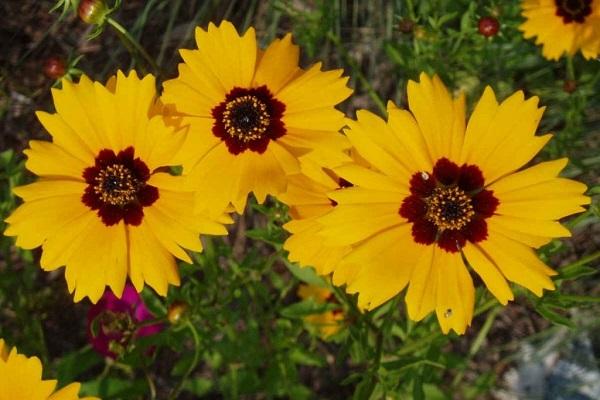
Golden Goddes
The flowers are slightly larger - 5 centimeters, with exactly five petals of a sunny, lemon color, in the center - the middle of the same color. The petals are ovoid with an even edge.
Samsara
This variety of coreopsis is intended for cultivation in hanging kokovito (wicker pots). The plant got such an opportunity for its particularly small and compact size.In one planter, it is enough to grow one plant so that it resembles a whole bouquet of bright yellow, five-petalled flowers with a slightly dark center.
Large-flowered
For a long time, breeder Darrell Probst was engaged in coreopsis. He loved these flowers for their great responsiveness to crossbreeding and positive results in his work. Special attention was paid to large-flowered coreopsis.

Today this species is represented by perennial shrub or semi-shrub herbaceous plants that bloom profusely all summer and autumn. The flower has the following characteristics:
- fibrous root system;
- profusely branched erect stem;
- the height of the coreopsis, depending on the variety, varies from 20 centimeters to 1 meter;
- the entire stem and shoots are covered with greenery;
- at the base, the leaves are larger;
- leaf shape - finger, pinnate;
- double flowers, simple;
- the cross section reaches 8 centimeters;
- colors: lemon, sunny, lilac, red, brown and mixed.
The following varieties are known.
Baden Gold
Grown in the vicinity of other Coreopsis due to its early flowering, which begins in June. The height of the plant from the base is 0.8-1 meter, on which 7-centimeter yellow flowers are located everywhere, with the same center. Greens look spectacular. The leaves are feathery, with a prominent central vein, pale green in color.
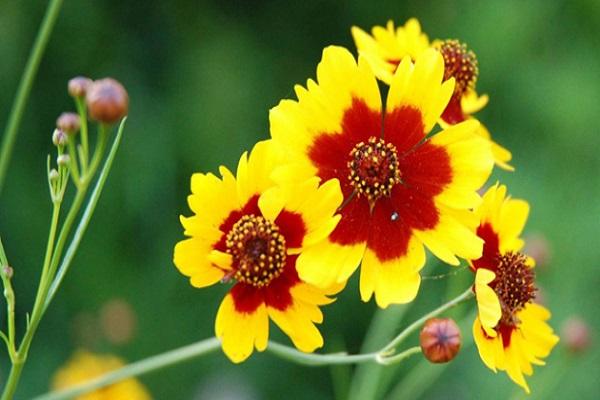
Mayfield Giant and Sunburst
These plants are similar to each other. Both are 80 centimeters high. The flowers are bright yellow. On the petals, closer to the center, there are almost brown dots.
Golden ball
Low-growing perennial coreopsis, up to 40 centimeters high, with yellow, closer to orange, flowers.
Lanceolate
The species was named for the shape of the foliage. Slightly elongated leaves concentrated at the base have a lily-lanceolate shape. Each flower is located on a separate shoot with no foliage. The inflorescences are small - up to 5 centimeters, mostly yellow and red.
Golden Queen
A perennial variety with yellow, almost lemon-colored inflorescences and a more pronounced center. Plant height can be up to 60 centimeters. Abundant flowering, almost before the onset of the first autumn frosts.
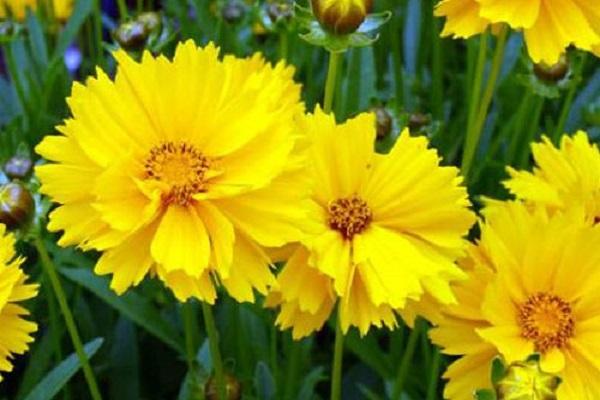
Goldfink
A variety of dwarf coreopsis, with yellow petals at the base, with red spots, merging into a strip framing the middle. The center is dark yellow. Height - 30 centimeters.
Rotkelchen
The size of the flowers is 5 centimeters, they have a red center and yellow petals with heavily cut edges, as if torn.
Whorled
A perennial that can be up to 6 years old. Strongly spreading shrubs with many thin shoots extending from the base. The foliage is thin, more like needles than leaves. Coreopsis is attractive with colors that can be red, yellow and their shades. The varietal set is represented by the following representatives, the most common among flower growers.
Zagreb
The coreopsis of the Zagreb variety has a small growth - only 40 centimeters, while other varieties are up to 1 meter. The flowers are yellow, they look golden in the sun. The inflorescences are framed by the most delicate needle-like leaves of a pale green color.
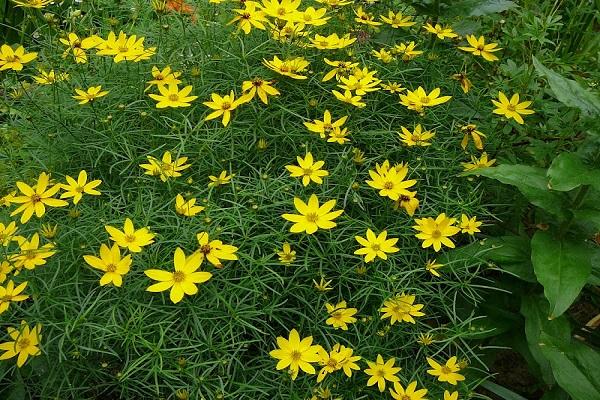
Moonbeam
The height of the variety is no more than 30 centimeters, with yellow flowers abundantly scattered throughout the bush.
Whorled coreopsis is also represented by other varieties, such as Ruby Red, Sun Child, Ruby Limerock.
Pink
A perennial that reaches a height of no more than 40 centimeters. Pink coreopsis is popularly called "kosmeya" for its splendor and, at the same time, weightlessness, which is achieved by thin leaves resembling long needles. The flowers are large, with white, red, burgundy and other shades. The most picturesque varieties are.
Sweet dreams
It attracts with its flowers with a bright yellow center, white petals with red spots at the base.
Heaven's Gate
The name of coreopsis is translated as "heavenly gate". The flowers are bright, pink, with a more saturated center, almost purple.
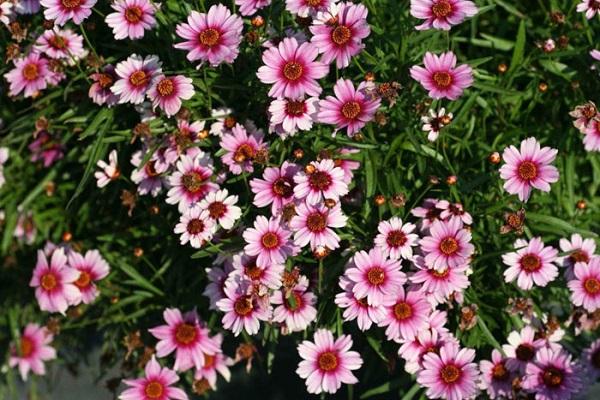
American Dream
The flowers have a shaggy yellow center, which stands out strongly against the background of lilac petals, with a strongly cut edge. This variety is shade-tolerant, unlike others that love an abundance of sunlight.
Auriculate
Dwarf perennials, no more than 30 centimeters high. The stem is highly branched, rather strong. The leaves are at the base and only up to half of the peduncles are opposite. The flowers are yellow and orange, 4 centimeters in diameter. Popular for its early flowering, which occurs in late spring.
Nana
A distinctive feature of the variety is the tempting structure of the petals, reminiscent of an accordion, folded in three, and then stretched. In places of waves, there is a dissection at the edge. Yellow color.
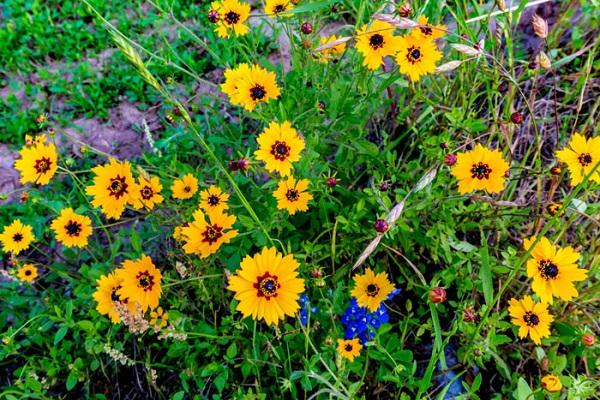
Zamfir
They have rounded foliage and orange-colored flowers, with grooved petals and a dissected edge.
Hybrid
These coreopsis are most distinguished by gardeners for their beauty and elegance, as well as compatibility in any flower beds. Hybrids include varieties:
- Goldfink;
- Ruby Frost;
- Golden Queen;
- Rothelkem.
The height does not exceed 60 centimeters, the size of the flower is up to 6 centimeters.
Growing from seeds
There are three ways of sowing seed: in autumn and spring - in open ground, and in spring - through seedlings.
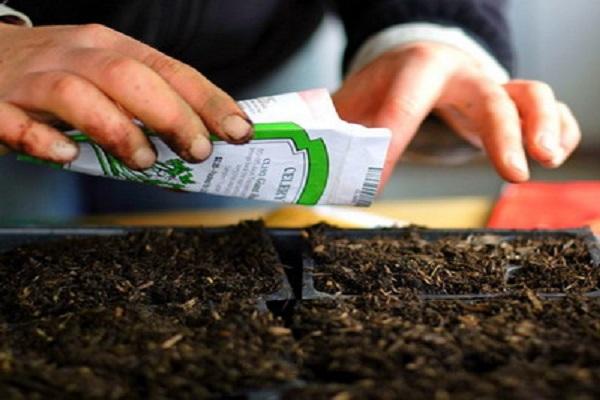
Sowing seedlings
This method is used for growing especially valuable varieties.
Timing
Sowing starts in March. Coreopsis takes time to form the aerial part well and strengthen the rather fragile roots, so this period is preferable. The plant is delicate and fragile, and any incident of nature can harm it.
How to plant
Seedling boxes are small and shallow. They are also sown in peat bogs (tablets), cassettes for sowing petunias. The earth is taken loose and airy. The sowing container is filled with it.
The seeds are laid out on the surface, in slightly recessed recesses. Sprinkle on top with a layer of sand of 5 millimeters. Usually, small-seeded plants when growing seedlings are covered with film, glass, to ensure a greenhouse effect.
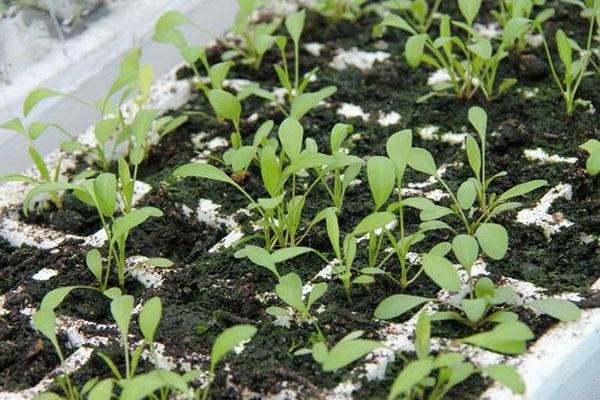
Airing
This technique is important for seedlings of coreopsis. Young shoots and seeds in the ground need oxygen for germination. It is constantly humid and hot under the shelter - this, of course, is good for swelling and pecking of achenes, but young seedlings can burn out from high temperatures. When the seedlings dissolve the first leaves, the shelter is removed.
Watering
Water as needed. The first time - after sowing and then - when the soil dries. Spraying is carried out every time after airing. Sprinkle with warm water.
Picking
Seedlings are planted in separate cups, which can be small in size, with the formation of 2-3 true leaves.
Landing in open ground
Before planting on the street, the seedlings of coreopsis are hardened. Two weeks before the planned transplantation to the flowerbed, the container with the seedlings is exposed under the shade of trees and bushes.

The time spent in the fresh air is increased every day, the seedlings adapted to weather conditions (sun, wind, rain) are obtained. Only in late May, early June, when the night low temperatures have passed, coreopsis is planted in a new place.
What time to plant
Basically, all seedlings are planted in the morning, evening. If planting is carried out in the morning, then young sprouts should be sheltered from the scorching sun. Evening seedlings feel much better.
Rules for planting seedlings in the garden
In the area allocated for coreopsis, the sun should prevail, but not direct, and there should be no stagnation of moisture. The soil is preferable fertile and loose. Rid the plant of heavy clay compounds.If this is not possible, humus and sand are introduced, preferably large.
The landing rules are as follows:
- The holes should be made small, strictly according to the size of the formed earthen coma, around the root system.
- Gently, holding the green part, transfer the contents of the cups into the hole to avoid damage to the roots.
- The size of an adult bush should be taken into account and the correct distances between neighbors in the flowerbed should be made. 25-30 centimeters will be enough.
- Sprinkle with earth on top and compact slightly, then spill thoroughly.
In one flowerbed, a plant can grow and develop safely for about 4-5 years, after which it is transplanted or planted.
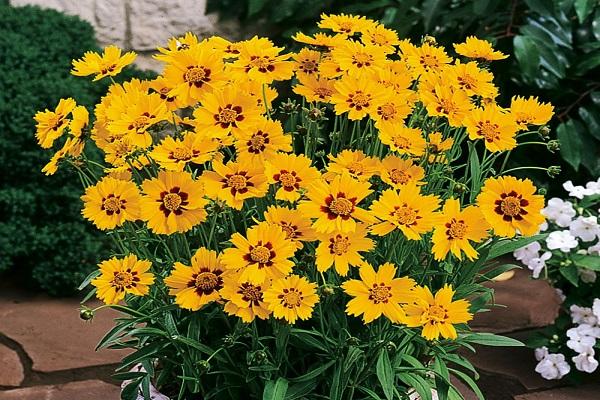
Care
The flowering plant is not demanding to care for, it is drought-resistant and tolerates winter frosts well without shelter. The main care is still carried out, it consists of the following agrotechnical techniques.
Watering
Water the plant sparingly, only as the soil dries up, and in especially dry weather - abundantly so that the roots are saturated with water and create a supply for leaves.
Weeding and loosening
Weeds are removed at first, then, when the plant gains strength and acquires a spreading crown, the weeds themselves do not grow under the coreopsis. In the process of weeding, the beds should be thoroughly loosened to provide air for the root system. They are also loosened after rain and watering to prevent stagnation of moisture, which is not so favorite for a flower.
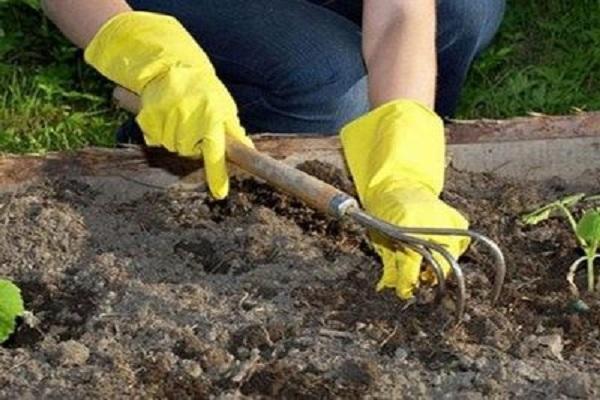
Breakage of wilted inflorescences
Any plant, especially a flowering one, takes on an unpresentable appearance after flowering. Often withered shoots, on which there were flowers, are cut off, which is why coreopsis does not lose its attractiveness. In addition, this procedure allows new shoots to grow.
Garter
Some coreopsis are tall, powerful bushes that can break under the influence of the winds. To avoid this, they are tied to a support. To do this, a stake is driven in and a flowering plant is tied to it with soft threads..
Transfer
It is better to transplant the coreopsis bush in the fall, like other abundantly flowering plants. It is carefully dug out without cutting the roots, and transferred to a new hole, along with an earthen lump. Next, the coreopsis is watered. From autumn to the first frost, the plant manages to take root in a new place, and in the spring it starts growing and abundant flowering.
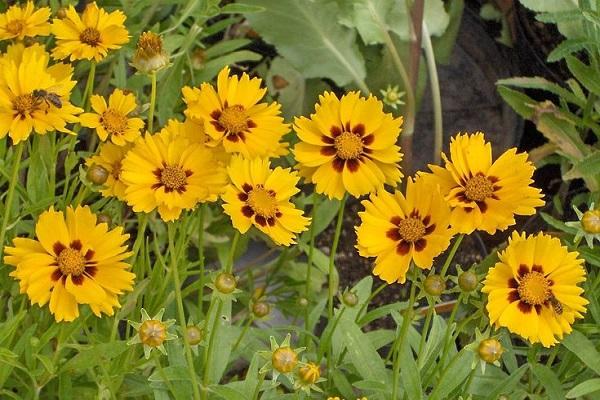
Fertilizer
Coreopsis is a fertility lover, so compost is added to improve development and flowering. This is done in the spring or during flowering. This procedure makes the bush lush, and makes it possible to form a large number of new flowering shoots. Compost can be replaced with any complex fertilizer for flowering shrubs, ornamental flowers.
Pruning
Cut off the faded shoots to replace with new ones. In the fall, the bush is trimmed completely, leaving a stump 10 centimeters high to facilitate shelter for the winter.
Preparing for winter
When, according to forecasts, a frosty winter is planned, the remains of coreopsis are sprinkled with foliage, spruce branches. The plant does not require any other shelter. Coreopsis tolerates sub-zero temperatures, up to -20 degrees, and does not require shelter.

Diseases and pests
Although the varietal characteristics prescribe high resistance to pests and diseases, no one gives a full guarantee. And we have to face such problems.
Fungal diseases
These ailments include leaf rust and fusarium. To fight, diseased and stained reddish leaves are cut off and the whole bush is treated with fungicides. If the shoots are twisted, the buds dry and sprinkle - there is a virus. In this case, Coreopsis is removed completely to prevent the spread of infection to neighbors.
Insects
The most frequent guests on the bushes are aphids, caterpillars and beetles eating soft juicy greens.For control, chemical agents are used for aphids and other insects. Large individuals are collected by hand.
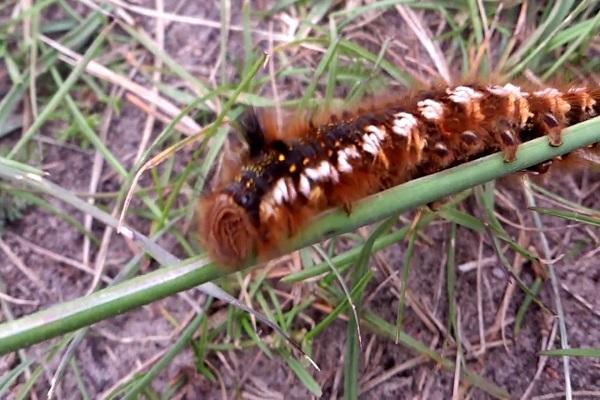
Reproduction
Coreopsis is reproduced by seeds, bush division and cuttings.
Cuttings
Cuttings are started in June and July. Shoots are cut into 10-15 centimeters. The cut should be a couple of centimeters below the internode. The lower leaves are torn off and planted in the sand. Containers with cuttings are kept in the shade and often watered to develop the root system.
By dividing the bush
The mother bush is divided in the spring, after the snow melts and the topsoil thaws. This propagation technique is much simpler and more reliable than grafting. Coreopsis is carefully, without cutting the roots, dug out of the ground, cleaned and cut with a sharp knife so that each part has at least three buds. Then each part is planted in a new place.

Flower bed design
Coreopsis is used and loved for long-term flowering. It is placed on flower beds of continuous flowering perennials, varying in color shades. So, for example, red flowers can be placed with yellow sunflowers towering in the background, blue delphiniums, or next to a riot of lupines.
The yellow eyes of coreopsis go well with daylilies and tall lilies. Some gardeners plant coreopsis in a bed of coniferous shrubs, using stones and ground cover plants.
Coreopsis fits into any group planting in the garden. Various combinations are used here, it all depends on imagination.
Use in landscape design
Tall bushes are planted in the background of various flower beds, undersized ones will perfectly decorate the sidewalk, path and become the framing of the foreground of any flower bed, mixborder and rabbatok. Some growers safely grow coreopsis on the balcony, in flower boxes.
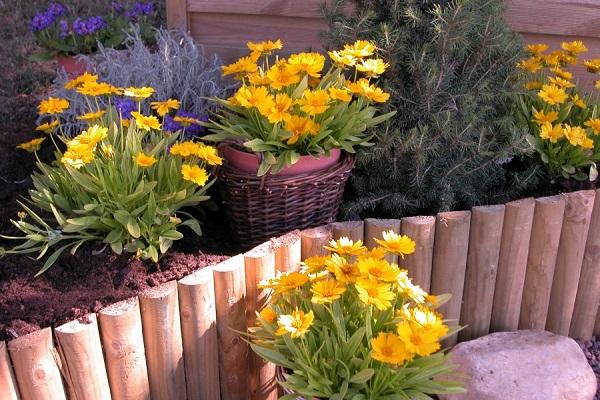
Coreopsis is the sun in the garden. Will decorate any corner of the personal plot. And in a vase it pleases the eye for a week, blooming to the last bud.
Reviews
Olga Sergeevna, 43 years old, Omsk.
“Having an apartment in the city, I spend my free time at the dacha, which is located within the city limits. I am allergic and sensitive to floral fragrances. Because of this, I had to abandon flowers: lilies, lilacs, hydrangeas, which have the strongest smells. Instead, she planted coreopsis, which is not only pleasing to the eye, unpretentious in care, but also does not cause problems, since the aroma of the plant is not audible. "
Tosya, 56 years old, Barnaul.
“Tosya is a nickname given by neighbors in the country. My name is Tamara Nikolaevna Shchukina. I will say to myself - an experienced florist, and I have known coreopsis for a long time. I especially like it for the ease. Does not require shelter for the winter, even in severe frosts of Siberia. It can decorate any bouquet, and on September 1, always give the granddaughter a blooming twig, while many flowers fade for school. "
